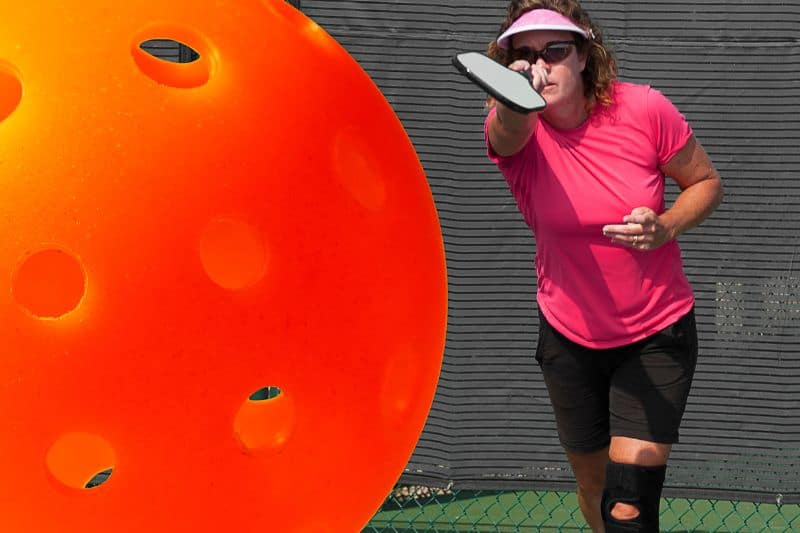
If you’ve been playing pickleball for some time, you already know the importance of a good serve, deep return, and third drop selection. However, the one pickleball shot that is often overlooked but determines how the rest of the point plays out is the fourth ball. Let’s look at why this pickleball shot is so important and how you can best use it to your advantage.
The Pickleball Shot You’re Overlooking
Pickleball is usually a receiver-advantaged game. Why is that? Because the team that gets to the net first usually wins the point. In doubles, one player is already at the net on the receiver team. And the other player can rush to the net as soon as they return the service.
Meanwhile, both the serving team players must stay back to let the ball bounce twice. As you advance in your pickleball skills with harder opponents, making a good third shot is not enough. Because chances are, your opponent will be able to do both a third shot drive or third shot drop without issues at intermediate to advanced levels.
That is why the fourth shot you make can set up the whole point. You need to learn to be intentional with how you handle your opponent’s third shot with your own fourth shot. Here are the fourth shots to make depending on your opponent’s third shot.
When Your Opponent Drives The Third Shot
You have a couple of options if your opponent drives their third shot. The first and most obvious is to block it by holding your paddle out with a punch volley. If your opponent’s drive is not particularly powerful and low, you can use it as an attack and smash it back at them. Or if the drive is high without much pace or spin, you can move out of the way.
When Your Opponent Makes A Good Third Drop
It makes sense to take a bad third shot drop out of the air to cut the time that your opponents have to come up to the net and to keep them back in the transition zone or baseline. However, a common mistake that many players make on their fourth shot is wanting to take every third shot out of the air.
This can often end in where the ball bounces high up from your paddle to where your opponents can smash it away. If your opponent makes a good third drop, you need to accept it and let the ball bounce. Then, focus on your dinking strategy and look for opportunities to speed the ball up.
When Your Opponent Makes An Attackable Third Drop
The most important role that the fourth shot plays is when it comes to a bad drop that your opponent makes. You should be punishing any drops that are high that you can reach in the air by hitting in at your opponent’s feet. You can even let the ball bounce first and then apply topspin to keep the ball low and heavy for your opponent to make their fifth shot.
If you’re not able to use the fourth shot as an opportunity for attack and create pressure for your opponents, you’re not taking the advantage that you have being up at the non-volley zone. And if your opponents are able to create pressure with their fourth shot, it makes it so much harder for you and your partner to make it to the kitchen line.
So in your next drilling session, make sure you’re not skipping the shot that comes after a drop. Make it hard for your partner to come up to the kitchen line by creating pressure shots. Aim the ball at their non-dominant size or add pace and spin to make their next drop more difficult.
More Pickleball Tips
Read Next: Top Six Pickleball Dropping Mistakes

